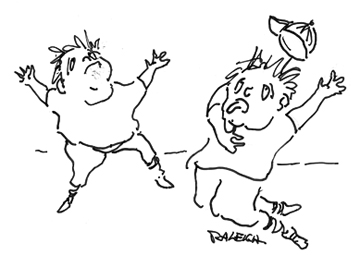Film: Violence in Film
By Henry P. Raleigh
ART TIMES February online 2014
 |
There has been a good deal of talk recently about violence in film and its influence on youth and what should we do about it. You see, I figure there are three levels; Violence in film: 'Good Violence; 'Ok Violence; 'Mostly unacceptable Violence’. 'Good Violence' got it's start with D. w. Griffith's 1912, "The Musketeers of Pig Alley". This can be called 'good' because the shoot-out scene was so charmingly amateurish - lots of smoke, no bleeding wounds or stray body parts, no screams or groans (well, it was a silent film) This innocence, more or less, was the standard for several decades. No one took the violence seriously, it was good fun all around. There was certainly no concern that this 'good' violence might have any negative influence on our youth and besides the real threat was all that sex stuff that was creeping into movies undermining our family values and the American way of life. As matter of fact kids found that the best part of 'good' violence was playing the victim and developing an original style of being mortally hit with whatever and expiring with great dramatic flare. I myself at the time perfected a three twist, ten-foot backward stagger, slow descent to the knees and final topple to the right.
The change came during the Big War in the 40's what with the photos and newsreels we found out that violence was more interesting than we had once thought - it was a real eye-opener, I can tell you. Naturally film sought to keep up with popular taste. The result was, what I call, "Ok Violence" since it was generally only the unmitigated, unredeemable bad guys who received the full effects of movie violence. Everybody agreed they deserved it so upping the level of violence was certainly OK so long as directed towards a beneficial end. Still, gaping wounds and pools of gore were slow to evolve during this period. However if done with decorum an increase in violence didn't seem to bother anyone and what harm, after all, can come from a few raw wounds and a decapitation or two? Gradually then full color mayhem came into it's own. The real problem that occupied our attention in the 50's and 60's was yet all that sex that now had saturated film. Kids weren't engaged in wholesome games of Cops and Robbers or Cowboys and Indians but were playing 'house' with Ken and Barbie or watching Annette Funicello in “Beach” movies.
Being so preoccupied with the moral decay of film it wasn’t noticed that the level of film violence had been rising by leaps and bounds aided and abetted by new CGI technologies, video games and the growing taste of young people for indiscriminate slaughter, zombies, vampires, the Apocalypse – and to everyone’s surprise, sex. So that’s how we’ve wound up by the turn of the century with this top-level “Mostly Unacceptable” rating. It’s obviously too late to go back to the Andy Hardy days of film and it looks like we’ve thrown in the towel on the sex thing. We’re stuck, I guess, at level three. I use “Unacceptable” because I’ve noted that it’s an “in” term nowadays and seems to suggest that whatever it is that is unacceptable in this instance may be the acceptable in another. This way, you see, no one’s right to freedom of violent expression is actually denied.
